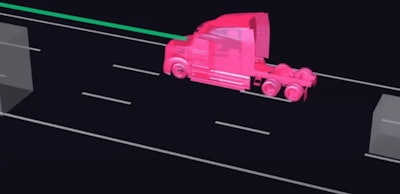
Toronto, Ontario – In this weekly electric and autonomous vehicle report, NASA announces their take on a solid-state battery; and Canadian company, Waabi Innovation discusses deliberately crashing self-driving vehicles.
Rocketing to solid-state
NASA has recently announced that they may have helped crack the code when it comes to creating solid-state batteries for future EV vehicles.
The Solid-state Architecture Batteries for Enhanced Rechargeability and Safety or SABERS team, have announced the successful preliminary testing of their battery packs that display multiple times more discharge power than the standard lithium-ion battery currently used in electric vehicles.
While current lithium-ion batteries contain liquids that make them vulnerable to overheating, fire and loss of charge over time, SABERS’s experimental solid-state battery pack instead uses stacked sulfur and selenium cells to mitigate these issues and allow for greater weight saving.
“Not only does this design eliminate 30 to 40 percent of the battery’s weight, it also allows us to double or even triple the energy it can store, far exceeding the capabilities of lithium-ion batteries that are considered to be the state of the art,” said Rocco Viggiano, principal investigator for SABERS at NASA’s Glenn Research Center in Cleveland.
So far, SABERS team has managed to power objects at 500 watt-hours per kilogram, a statistic that represents double that of a current electric car.
While this technology is still being tested, the future goal for the SABERS team is to work on developing a functioning battery for electric-powered commercial flights in order to help reduce carbon emissions from air travel.
Crashing for safety
Waabi Innovation, a Toronto-based company dedicated to propelling the next generation of autonomous trucking technology has recently teamed up with the United States ride-hailing company Uber logistics to deploy their A.I. powered AV technology.
While many automakers test their self-driving vehicles on the road, Waabi employs an A.I.-powered software known as Waabi Word to replicate real-world conditions.
Using this software, Waabi is able to create various digital scenarios such as computerized cars mindlessly crossing lanes in the road ahead of a self-driving vehicle or a self-driving vehicle having to brake sharply for a pedestrian.
This data is then fed into an application known as Waabi Driver that offers on-road AVs with updated programming on how to react to diverse real-world modelled situations.
Under Texas law, self-driving lorries are currently allowed on roads without human assistance. During the next decade, Waabi and Uber Freight intend to deploy “billions of miles” worth of Waabi Driver capacity vehicles, starting with Texas and then moving across North America.






















